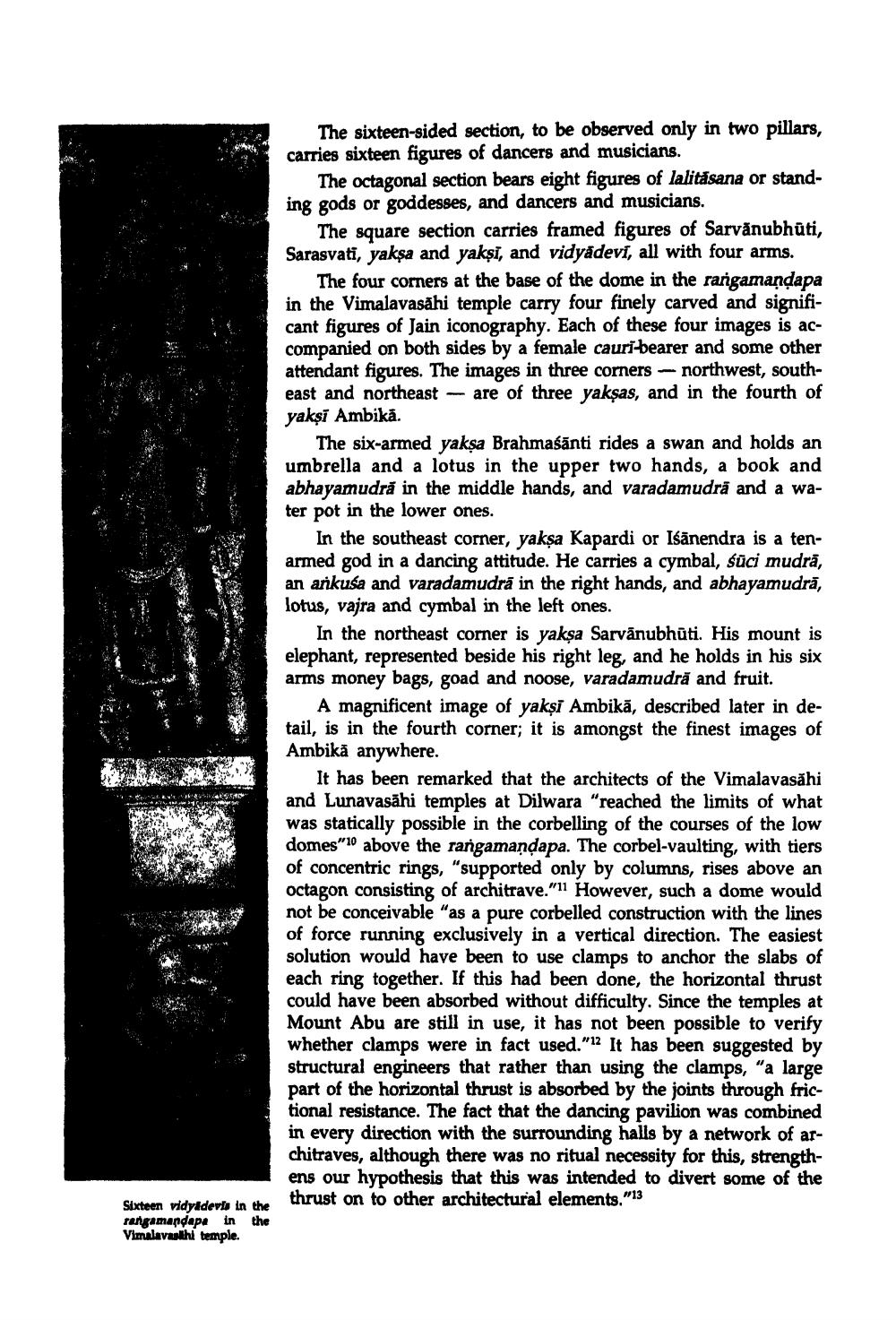________________
Sixteen vidyadevis in the rangamandapa in the Vimalavashi temple.
The sixteen-sided section, to be observed only in two pillars, carries sixteen figures of dancers and musicians.
The octagonal section bears eight figures of lalitásana or standing gods or goddesses, and dancers and musicians.
The square section carries framed figures of Sarvănubhuti, Sarasvati, yakṣa and yakṣi, and vidyadevi, all with four arms.
The four corners at the base of the dome in the rangamaṇḍapa in the Vimalavasahi temple carry four finely carved and significant figures of Jain iconography. Each of these four images is accompanied on both sides by a female cauri-bearer and some other attendant figures. The images in three corners - northwest, southeast and northeast are of three yakṣas, and in the fourth of yakṣi Ambikā.
The six-armed yakṣa Brahmaśānti rides a swan and holds an umbrella and a lotus in the upper two hands, a book and abhayamudră in the middle hands, and varadamudra and a water pot in the lower ones.
In the southeast corner, yakṣa Kapardi or Isänendra is a tenarmed god in a dancing attitude. He carries a cymbal, śūci mudrā, an ankusa and varadamudra in the right hands, and abhayamudra, lotus, vajra and cymbal in the left ones.
In the northeast corner is yakṣa Sarvānubhūti. His mount is elephant, represented beside his right leg, and he holds in his six arms money bags, goad and noose, varadamudră and fruit.
A magnificent image of yakṣi Ambika, described later in detail, is in the fourth corner; it is amongst the finest images of Ambika anywhere.
It has been remarked that the architects of the Vimalavasǎhi and Lunavasāhi temples at Dilwara "reached the limits of what was statically possible in the corbelling of the courses of the low domes"10 above the rangamandapa. The corbel-vaulting, with tiers of concentric rings, "supported only by columns, rises above an octagon consisting of architrave."11 However, such a dome would not be conceivable "as a pure corbelled construction with the lines of force running exclusively in a vertical direction. The easiest solution would have been to use clamps to anchor the slabs of each ring together. If this had been done, the horizontal thrust could have been absorbed without difficulty. Since the temples at Mount Abu are still in use, it has not been possible to verify whether clamps were in fact used."12 It has been suggested by structural engineers that rather than using the clamps, "a large part of the horizontal thrust is absorbed by the joints through frictional resistance. The fact that the dancing pavilion was combined in every direction with the surrounding halls by a network of architraves, although there was no ritual necessity for this, strengthens our hypothesis that this was intended to divert some of the thrust on to other architectural elements."13




